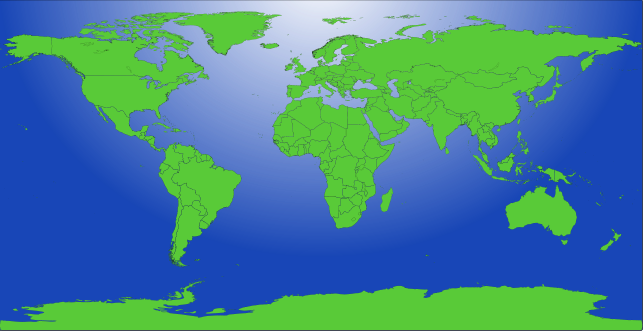
Manifesto for a Healthy Recovery from COVID-19
There is good news surrounding the COVID-19 crisis. It has brought out the best in societies: solidarity among neighbors, colleagues and health professionals, and emergency relief and treatments. And its lessons are clear, despite taking hundreds of thousands of lives and creating the worst economic recession since the 1930s, resulting in lost employment, income, health, and development.
We now know we cannot do things as before, allowing infectious diseases to jump from wildlife to humans, as evidence suggests COVID-19 did. It confirmed that death and lost livelihoods are driven by socio-economic, gender and minority inequities. Saving money by neglecting environmental protections, health systems, emergency preparedness and social safety nets exposed economic fragility.
But the lockdown measures suggested a brighter possible future: pollution levels dropped, technology offered new ways of working and studying, commuting times shrank, medical consultations became remote, and more time was spent within families. Governments committed trillions of dollars to resuscitate economic activity to safeguard people’s livelihoods and health, minimizing environmental degradation, pollution and greenhouse gas emissions. Decisions they make in the coming months can initiate a healthier, fairer world.
The World Health Organization has provided a “Manifesto” – prescriptions and action steps for a healthy recovery from COVID-19 while creating a healthier, fairer and greener world. What follows is an overview of the Manifesto, which can be read in its entirety here. The “actionables” are explained in the detailed WHO document.
Prescription 1. Protect and preserve the source of human health: Nature.
Economies are a product of societies relying on clean air, water, and food. Human pressures, from deforestation, polluting agricultural practices, and unsafe management/consumption of wildlife, must cause less impact on our environment to reduce risk.
Actionables pertaining to: biological diversity, climate change, sanitation, air pollution, chemicals
Prescription 2. Invest in essential services, from water and sanitation, to clean energy in healthcare facilities.
Pathogens are widespread in water and waste, and only sound management can prevent the spread to humans. Avoidable environmental and occupational risks cause 25% of all deaths, meaning investment in healthier environments can guard against future disaster. As an example, every dollar invested in the US Clean Air Act returned $30 in benefits to citizens, by improving air quality and health.
Actionables pertaining to: water, sanitation, hygiene, clean energy, healthy, safe, resilient workplaces, healthcare facilities
Prescription 3. Ensure a quick and healthy energy transition.
Currently, over 7 million people a year die from the effects of air pollution (1 in 8 deaths). Over 90% of people breathe air with pollution levels exceeding WHO air quality guidelines, and 66% of this exposure results from burning fossil fuel.
The good news is renewable energy continues to drop in price, increase in reliability, and provide numerous safer, higher paying jobs. Infrastructure decisions taken now will affect economies and public health, and will favor cleaner, renewable energy. Several countries hardest hit by COVID-19 put green development alongside health at the heart of their pandemic recovery strategies. A global transition to clean energy would not only meet Paris Climate Agreement goals, but would also improve air quality and repay the cost of investment twice over.
Actionables to: transition away from fossil fuels; financially support low-emission, renewable energy; increase reliance on the co-generation of power and energy; transition from a carbon-intense to a zero-carbon system
Prescription 4. Promote healthy, sustainable food systems.
Diseases caused by a lack of food, or unhealthy diets, are the largest cause of illness. They increase vulnerability to other risks like obesity and diabetes, and represent the highest risk for illnesses like COVID-19. Agriculture contributes about one-fourth of global greenhouse gas emissions, and land use change drives new disease outbreaks. WHO’s dietary guidelines would save millions of lives while reducing disease and greenhouse gas emissions.
Actionables to: update national dietary guidelines; strengthen local food production and processing; promote diets based on non- or minimally processed foods; promote trade policy, tariffs and quotas to improve sustainable food supply; create healthy, safe, sustainable food environments; improve storage, preservation, transport, and distribution to reduce food insecurity; preserve and promote sustainable fish habitats
Prescription 5. Build healthy, livable cities.
Over half of the world’s population now lives in cities where high population densities produce 60% of greenhouse gas emissions. But public transport, walking and cycling bring health benefits by reducing pollution, traffic injuries, and the over 3 million annual deaths from physical inactivity.
Actionables pertaining to: city design, social inclusiveness and cohesion, clean air, access to adequate water, sanitation, hygiene, waste management, food, housing
Prescription 6. Stop taxpayers from funding pollution.
Globally, US$ 400 billion of taxpayer money is spent every year subsidizing fossil fuels that drive climate change and pollution. Costs generated by related impacts of pollution bring the actual costs to over US$ 5 trillion per year. Placing a price on polluting fuel damage would cut air pollution deaths by 50% and greenhouse gases by more than 25%, and would raise global GDP revenues by 4%.
Actionables to: stop subsidizing fossil fuels; start subsidizing and/or allowing tax exemptions on clean energy sources; embed environmental and health benchmarks in the financial recovery
Other WHO suggested cross-cutting actions
- Support the implementation of the Health in All Policies
- Mainstream health and well-being
- Support communities in planning and policy development
- Conduct health, economic, and environmental impact studies
- Collaborate on managing environmental determinants of health
- Use fiscal and financial mechanisms to influence environmental determinants of health
- Monitor risks to health, well-being, and health impacts of policies
A global movement for health and the environment
The COVID-19 crisis has proven people support even difficult policies if decision-making is transparent, evidence-based, inclusive, and protects their health and livelihoods, rather than serving special interests. This needs to be reflected in decisions that ensure health professionals are involved in the policies effecting long-term public health. Globally, health professionals support protecting the environment and public health, and champion more green, healthy, prosperous future societies.

